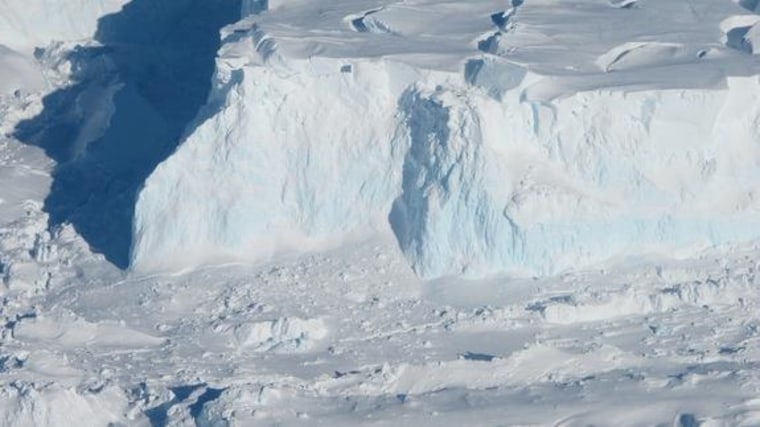Antarctica is a land of ice. But dive below the West Antarctic Ice Sheet, and you'll find fire as well, in the form of subglacial volcanoes.
Now, a new study finds that these subglacial volcanoes and other geothermal "hotspots" are contributing to the melting of Thwaites Glacier, a major river of ice that flows into Antarctica's Pine Island Bay. Areas of the glacier that sit near geologic features thought to be volcanic are melting faster than regions farther away from hotspots, said Dustin Schroeder, the study's lead author and a geophysicist at the University of Texas at Austin.
This melting could significantly affect ice loss in the West Antarctic, an area that is losing ice quickly.
"It's not just the fact that there is melting water, and that water is coming out," Schroeder told Live Science. "It's how that affects the flow and stability of the ice."
Antarctic heat
Researchers have long known that volcanoes lurk under the ice of West Antarctica. This is a seismically active region, where East and West Antarctica are rifting apart. In 2013, a team of scientists even found a new volcano beneath the West Antarctic Ice Sheet.

West Antarctica is also hemorrhaging ice due to climate change, and recent studies have suggested there is no way to reverse the retreat of West Antarctic glaciers. However, the timing of this retreat is still in question, Schroeder said — it could take hundreds of years, or thousands. It's important to understand which, given that meltwater from the West Antarctic Ice Sheet contributes directly to sea level rise.
Scientists use computer models to try to predict the future of the ice sheet, but their lack of understanding of subglacial geothermal energy has been a glaring gap in these models. Measuring geothermal activity under the ice sheet is so difficult that researchers usually just enter one, uniform estimate for the contributions of geothermal heat to melting, Schroeder said.
Of course, volcanism isn't uniform. Geothermal hotspots no doubt influence melting more in some areas than in others.
- Stephanie Pappas, Live Science
Follow Stephanie Pappas on Twitter and Google+. Follow us @livescience, Facebook & Google+. This is a condensed version of a report from Live Science. Read the full report.
- Fire and Ice: Images of Volcano-Ice Encounters
- Loss of Antarctic Glacier is Irreversible, NASA Scientists Say | Animation
- Images of Melt: Earth's Vanishing Ice
Copyright 2014 LiveScience, a TechMediaNetwork company. All rights reserved. This material may not be published, broadcast, rewritten or redistributed.